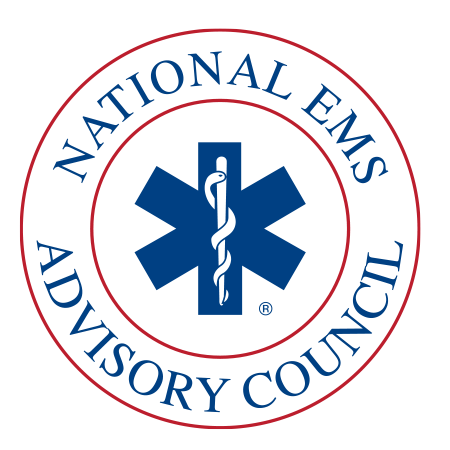Highlights from February Meeting of the National EMS Advisory Council (NEMSAC)

The National EMS Advisory Council (NEMSAC) meets quarterly to discuss current activities and issues within EMS and 911. The most recent meeting was held February 14-15, 2023; attendees participated both virtually and in person. This was the final meeting for 12 of the council’s 25 members due to term expirations. New NEMSAC members will be introduced at the next meeting on May 10-11; members of the public can register to attend here.
FICEMS Update to NEMSAC
Nanda Srinivasan, Chair of the Federal Interagency Committee on EMS (FICEMS) and NHTSA's Associate Administrator for Research and Program Development, updated NEMSAC on recent FICEMS activities, including:
The Centers for Medicare and Medicaid Service (CMS) is considering continuing the more flexible reimbursement policies that existed during the COVID-19 pandemic. Data collection began with participating agencies on January 1, 2023, and will continue for a year. CMS will report on the results in mid-2024.
NHTSA is working to alleviate a number of challenges in EMS, including sharing information on the extensive waiting time for agencies to receive a new ambulance once an order is placed. Workforce shortages and the mental health of EMS practitioners and 911 telecommunicators remain high priorities. The Office of EMS continues its collaboration with the Centers for Disease Control and Prevention (CDC), the National Institute for Occupational Safety and Health (NIOSH) and other federal partners to improve research and interventions for first responder suicides and overall mental health. The Office of EMS continues to collaborate with the Substance Abuse and Mental Health Services Administration (SAMHSA) and Veteran Affairs (VA) since the launch of the 988 Suicide and Crisis Lifeline and as additional crisis-system improvements are implemented.
Road Safety for the Public and EMS Responders
Gam Wijetunge, director of NHTSA’s Office of EMS, reported that 42,915 deaths occurred on U.S. roadways in 2021, according to the Fatality Analysis Reporting System (FARS), with 40 percent of deaths occurring in people who were alive when first responders arrived but later died. The yearly death total was up 10.5 percent from the previous year, the highest yearly increase in NHTSA’s reporting system’s history.
The National Road Safety Strategy was created with goals for “safer people, safer roads, safer vehicles, safer speeds and post-crash care to enhance survivability.” New federal grants will deliver more than $5 billion over the next five years to improving road safety, which includes post-crash care.
Wijetunge also announced that NHTSA and the U.S. Fire Administration will collaborate on reducing “struck-by” casualties at the scene of incidents. From 2019 to 2022, 205 responders were killed while working at a roadway incident, including 33 firefighters and/or EMS clinicians.
Joseph Tebo of the Federal Highway Administration (FHWA) gave an update about its Traffic Incident Management program. FHWA’s responsibilities include training fire and EMS first responders in safe roadside procedures. FHWA plans to train one million first responders, and are currently more than halfway toward reaching that goal.
Status of Advisories
NEMSAC provides recommendations to NHTSA and FICEMS through formal written advisories on some of the most challenging issues facing EMS.
“NEMSAC committee members represent one of the most diverse and comprehensive stakeholder groups in EMS,” said Jon Washko, NEMSAC Co-Chair, following the meeting. “Advisories have been carefully thought through and vetted, reflecting public comments and a variety of perspectives."
“Every leader in EMS should understand NEMSAC's and FICEMS's importance and should pay close attention to these advisories and grant opportunities,” he added. “These can be used at the local level for evidence-based discussions with community policymakers and taxing entities.”
Advisories Moved to Final Status:
“A Strategy to Mitigate Negative Impacts to EMS Well-Being During Public Health Emergencies by Recognizing EMS Practitioners as Essential Healthcare Workers as well as Identifying the term Prehospital as a Healthcare Setting”
Advisories in Draft Stage:
The EMS funding advisory was renamed “The Annual State of EMS System Financing” and moved to draft status. Due to its critical importance, it was recommended this became a standing agenda item and be updated annually.
“Ensuring Optimal Emergency Response via a Fully Integrated 911 and Emergency Medical Dispatch System”
Advisories in Research Stage:
“Designation of Graduate-Prepared Paramedics as Federally Recognized Practitioners”
“Equitable Access to EMS Based on Population Density”
“Large-scale Incidents: EMS Planning and Preparedness” (which will include details around public and private partnerships and EMS reciprocity)
“Ambulance Crash Data Analysis,” to identify strategies to reduce the frequency and severity of ambulance crashes and enhance data collection on crashes
New proposed topics that were accepted include:
“Data Management Standards,” which will aim to promote the standardization of data, improve the quality of the data collected and examine how best to use the data at all stages of the EMS process.
“The Impact of Public Law 115-83 (Protecting Patient Access to Emergency Medications Act) on EMS Agencies” will recommend standard training practices that mirror the law to ensure consistent patient care across all states. Additionally, the advisory will address the challenges that EMS faces in complying with Drug Enforcement Administration (DEA) regulations regarding the transportation of narcotics and other controlled substances.
At the end of the meeting, Mr. Wijetunge thanked all NEMSAC members for their service to the nation and specifically recognized those whose terms are ending. These are: Kathleen Adelgais, Mary Ahlers, Cherie Bartram, Lillian Bonsignore, Richard Bradley, Lori Knight, David Mendonsa, Matthew Powers, Alicia Sledge, Peter Taillac, Ryan Walter and Jonathan Washko.


